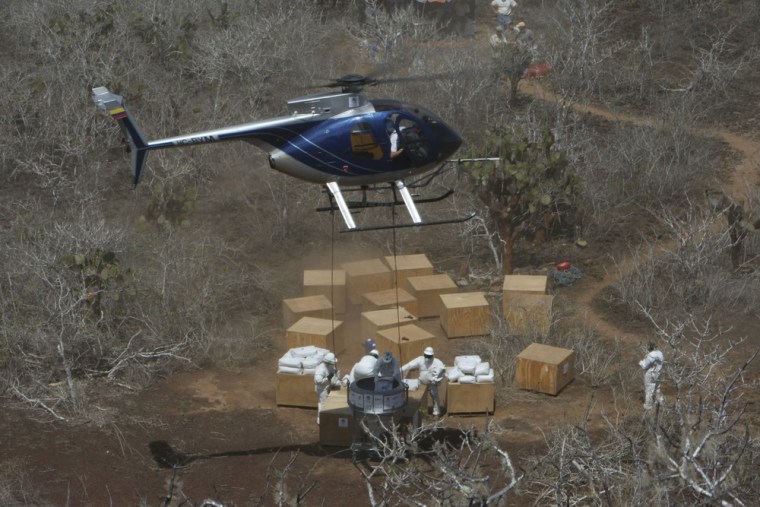A full-scale assault is targeting invasive rats that threaten the survival of birds, tortoises, iguanas and native plants of the Galapagos Islands, whose unique flora and fauna were studied by Charles Darwin as he developed his theory of evolution.
Black rats, Norway rats and house mice, believed introduced to the Pacific Ocean archipelago by ships beginning in the late 17th century, are being attacked with a specially designed poison spread by helicopter.
The idea is to eradicate all nonnative rodents, beginning with small- and medium-sized islands, without endangering other wildlife.
Developed and donated by Bell Laboratories of Madison, Wis., the poison was first employed last weekend on Rabida, Sombrero Chino, Bartolome and Plaza Norte islands, as well as five islets.
The poisoned bait is contained in light blue cubes that attract rats but are repulsive for the sea lions and birds that also inhabit the islands.
Officials say they will know in mid-February whether it has been successful.
The project is being run by the Galapagos National Park Service with the backing of the Charles Darwin Foundation, Island Conservation, the University of Minnesota's Raptor Center and the Durrell Wildlife Conservation Trust.
"The rats have placed in serious risk — on the edge of extinction — the Galapagos petrel, which is a marine bird unique in the world and of which only 120 remain," the project's manager, Victor Carrion, told The Associated Press by telephone from the islands.
Carrion said a total of 50 bird species are endangered by the rodents, eight of them critically, as well as giant tortoises, iguanas and a series of plants.
"The rats are omnivores, which means they eat whatever they encounter," he said. That includes animal eggs.

The Galapagos Conservancy said on its website that before the poison was deployed last weekend, scientists removed 20 Galapagos hawks from two islands and placed them in cages where they will be held for about two months. The raptors might otherwise have fed on rodents that consumed the poison, it said.
The archipelago has 19 islands and 42 islets, and official say the islands of Isabela, Santa Cruz, Santiago, San Cristobal, Floreana and Santiago are infested with up to four invasive rodents per square meter.
Carrion said the eradication program — whose first phase is costing just under $1 million — is the first in South America to be conducted on oceanic islands. He says he expects it will take 20 to 25 years to clear the islands entirely.
The rodents are not the biggest danger, however, to the fragile ecosystem of the islands 600 miles off Ecuador's coast. That danger is humans, followed by dogs.
The Galapagos were declared protected as a UNESCO Natural Heritage site in 1978. In 2007, UNESCO declared them at risk due to harm from invasive species, tourism and immigration.
The variety of finches on the islands inspired Darwin's theory of evolution.
